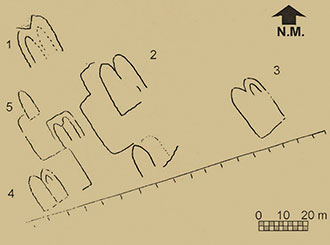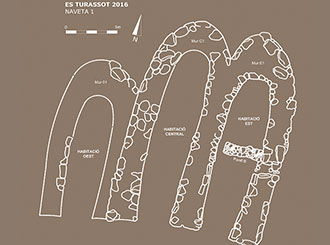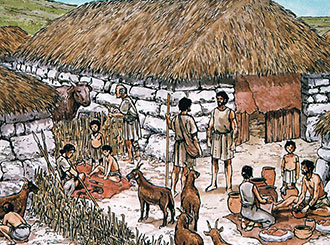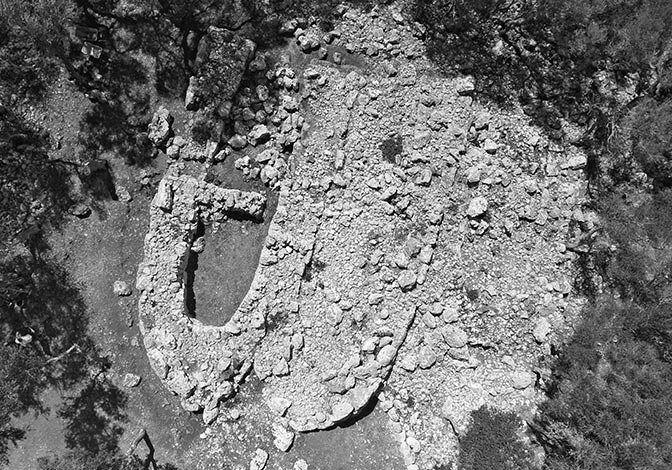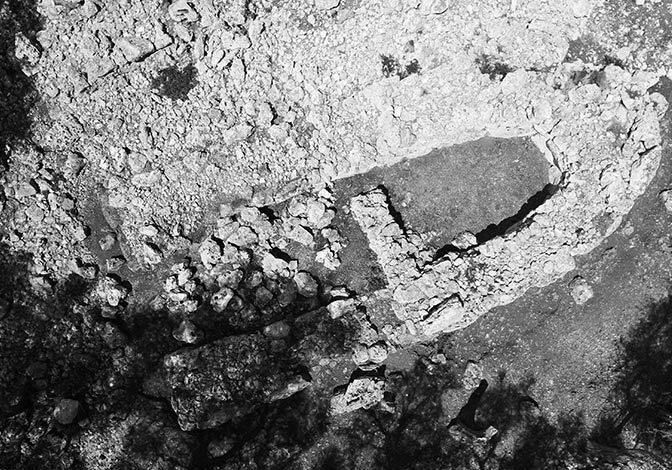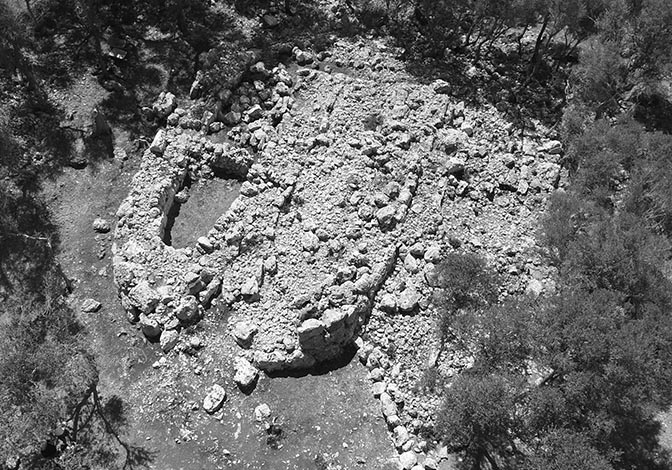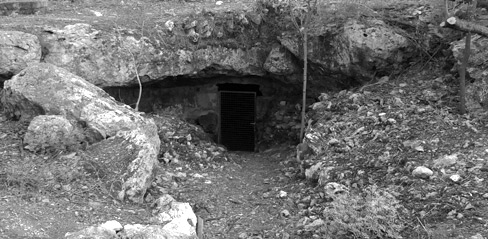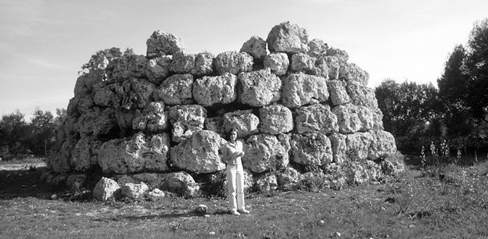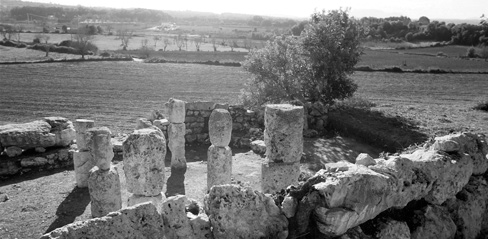4 Settlement of Turassot
Settlement of Turassot / Talayots of Can Quiam
This site since 2015 is in its initial phases of being cleared of vegetation, excavated and restored thanks to the support of the Town Hall of Costitx and the Insular Council of Mallorca.
The work carried out confirms we are witnessing one of the best conserved groups of Naviform buildings on the island.
The Naviform period of Costitx and Sencelles
It is during this period of time that the first evidences of settlement is documented in this area. Other settlements of navetes, nearby and of example, are the sites of Morelló Nou, Son Calussa or Son Fransoi, all part of the municipality of Sencelles. They are situated between the two torrents of Sencelles and Pina, offering at that time well irrigated meadows which were fundamental for agriculture and livestock.
The navetes are a type of housing built with Cyclopean stone walls and the roofs were built of perishable material. The ground plan has the form of a horseshoe or an up turned boat’s keel, from here the name naveta was taken. These Naviform buildings may be found grouped together, which would be the case of Es Turassot, or alone as at Can Rom.
In each of these navetes lived a parental group. The interior offered an ample space that supplied for different activities associated with labor and craft production; for example grinding cereal with stone hand mills and at the same hearth, food was cooked, ceramic pots were baked, bronze was smelted and awls of bone were toughened.
The necropolis is of a collective nature and the funerary rites continued to be celebrated in natural caves of the same like as the Cova del Camp del Bisbe. Concurrently these collectives would hollow out artificial caves from rock as the Cova d’en Mariana or the Cova de la Vileta (Sencelles).
Thanks to the data obtained at the Cova del Camp del Bisbe and that of the Cova des Càrritx in Menorca, we know that these caves were employed by all the members of the community; men, women, children of parental ties. The lifespan of these people was around the age of thirty. Investigation has given us the certitude that their diet was based on the consumption of animal origin, cereals (barley, wheat, spelt), vegetables (broad beans) and fruit (figs) all of these products formed part of their diet.
The idea that these communities were organized by the principals of cooperation and reciprocity and the fact that men, women and children all had access to the same funerary ritual, evidenced the absence of inequality within the settlements.

